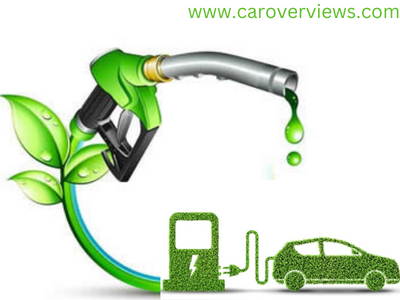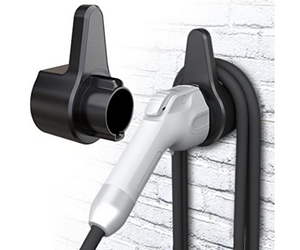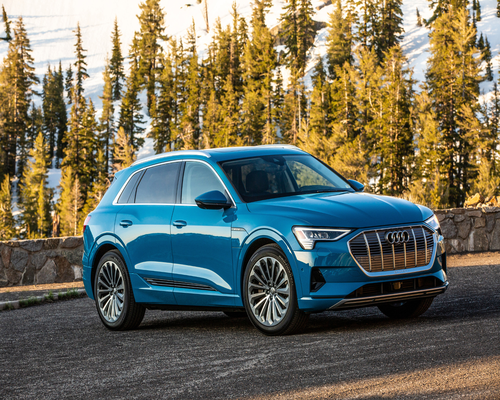
Even though gas prices have begun to fall, AAA reports that drivers are not in a rush to return to the pump. The national average for a gallon of gas was $4.05 on August 8th, down from $4.72 the previous month, but still significantly higher than the $3.19 national average a year ago. Drivers reduced their fuel consumption by driving less and combining errands, according to the agency. If cramming a week’s worth of errands into a single trip isn’t an option, a hybrid or all-electric vehicle can help reduce (or eliminate) trips to the gas station.
Due to the ongoing inventory shortage, purchasing a new fuel-efficient car may be easier said than done, and shoppers are facing a double-edged sword: not only is it more expensive to fill up their vehicles, but sparse inventory and rising prices also make buying a new car more difficult.
According to the most recent J.D. Power sales report, 55% of vehicles sell within 10 days of arriving at a dealership, and the average car spends 19 days on a dealer lot—a decrease from 29 days a year ago. Even though prices remain high, new vehicles are selling quickly. In July, the average estimated new-vehicle transaction price was $45,869, up 12% from the previous year.
The most available new all-electric and hybrid/PHEV vehicles as of August 4 are listed below, ranked by total inventory among Cars.com dealers, along with the average number of days each model has spent on dealer lots and its median price.
The majority of readily available EVs are
The redesigned Chevy Bolt EV and all-new Bolt EUV are the most popular EVs among Cars.com dealers. The pair also tops the list of the cheapest model-year 2022 EVs, with 2023 models receiving a nearly $6,000 price cut. The Bolt EV and EUV are among the most efficient all-electric vehicles, in addition to their availability and affordability.
Earlier in 2022, the Hyundai Ioniq 5 and the related Kia EV6 were at the top of the availability rankings, but have since dropped to sixth and seventh place, respectively. In terms of EV availability, the new all-electric Ford F-150 Lightning and its Mustang Mach-E stalemate outperform South Korean automakers, and the fact that Detroit-based automakers GM and Ford produced the top four most available vehicles fits with a larger trend showing that American-made vehicles are more available.
Tesla is a notable exception to the preceding list. New Tesla models are not included in Cars.com dealer inventory because the automaker sells vehicles directly to consumers. Used Tesla’s may be easier to find than new Tesla’s: Used Tesla Model 3, S, X, and Y examples from model years 2020–22 accounted for 14,036 vehicles in Cars.com dealer inventory as of July.
1. DASANRAO EV Charger Holder,Portable Wall Connector Holster

2. VacLife Handheld Vacuum, Car Vacuum Cleaner Cordless

3. Stalwart – Electric Car Blanket- Heated 12 Volt Fleece Travel Throw for Car

4. Vibrelli Electric Bike Hitch Rack – 2 Ebike Rack , Mountain Bike, Standard Bicycles – 65lbs

The Most Popular Hybrids and Plug-In Electric Vehicles
A hybrid, unlike an all-electric vehicle, will not allow you to completely avoid the gas station, but it will allow you to fill up less frequently. The Hyundai Elantra Hybrid, for example, achieves an EPA-rated 54 mpg combined; the gas-only model achieves 37 mpg.
The Jeep Wrangler Unlimited 4xe plug-in, the most available hybrid on the list, gets an EPA-rated 49 mpg-equivalent combined — a significant advantage over the gas-powered Wrangler Unlimited 22 mpg or diesel-powered model’s 25 mpg maximum. The Wrangler Unlimited 4xe’s higher mpg rating comes at a cost: after a significant price increase in 2021, the Wrangler Unlimited 4xe now starts at $56,190 (all prices include destination charge), while the standard Wrangler Unlimited starts at $35,640.
The Toyota RAV4 Hybrid has a lower starting price than the Jeep Wrangler 4xe, with a starting price of $30,910 compared to $28,310 for the standard model. With an EPA-rated 40 mpg combined for the hybrid versus a maximum combined 30 mpg for the gas-only model, the break-even point for fuel savings may come sooner in this case.
Electrified Vehicles Are a Drop in the Ocean
We examined recent inventory levels at Cars.com dealers to determine which fuel-efficient electric and hybrid vehicles shoppers are most likely to find. Electrified vehicles (including hybrids, plug-in hybrids, and all-electric models) account for about 4% of total new-vehicle inventory, with gas and diesel options accounting for the other 96%.
According to Automotive News, fuel price increases have increased interest in all-electric vehicles. In the first quarter of 2022, EV registrations increased by 60%. However, the options are limited: According to Cars.com, pure-electric vehicles account for only 1.5% of all new inventory at dealers, while hybrids and PHEVs account for nearly 3%.
Is the fuel savings worthwhile?
When looking for a fuel-efficient vehicle, availability is only one factor to consider. While hybrid ownership will be similar to owning a gas-only vehicle, the transition to all-electric brings new considerations—and costs. These include the maximum range of the vehicle, the cost of installing a home charger, and higher average transaction prices. The majority of the most powerful EVs have premium price tags, and installing a Level 2 home charger can add thousands of dollars to the overall cost of ownership.
To know more about best electric cars to buy in 2022 and 2023 click HERE.
Driving techniques that save fuel
Driving more efficiently can save you hundreds of dollars in fuel each year, improve road safety, and prevent vehicle wear. Use these five fuel-efficient driving techniques to reduce your vehicle’s fuel consumption and CO2 emissions by up to 25%.
Gently accelerate
The more fuel you use, the faster you accelerate. In the city, you can save fuel by gently stepping on the accelerator pedal. To be as fuel-efficient as possible, accelerate your vehicle from a stop to 20 km/h in 5 seconds. Consider a cup of coffee on the dashboard. Don’t let it get out!
Prepare for traffic.
While driving, keep an eye out for what’s coming up. Maintain a safe distance between your vehicle and the one in front of you. By paying close attention to what pedestrians and other vehicles are doing and imagining what they will do next, you can maintain a steady speed while using less fuel. It is also safer to drive in this manner.
Avoid driving at high speeds.
To save money on gas, stick to the speed limit! Most cars, vans, pickup trucks, and SUVs use the least amount of gas when travelling between 50 and 80 kilometers per hour. Above this speed limit, vehicles use more fuel as they accelerate.
A vehicle, for example, uses approximately 20% more fuel at 120 km/h than at 100 km/h. On a 25-kilometer trip, this increase in speed – and fuel consumption – would save you only two minutes.
To slow down, coast.
You lose forward momentum every time you use your brakes. When you look ahead at how traffic is behaving, you can often see when it’s time to slow down. By taking your foot off the accelerator and coasting to slow down instead of using your brakes, you will save fuel and money.



